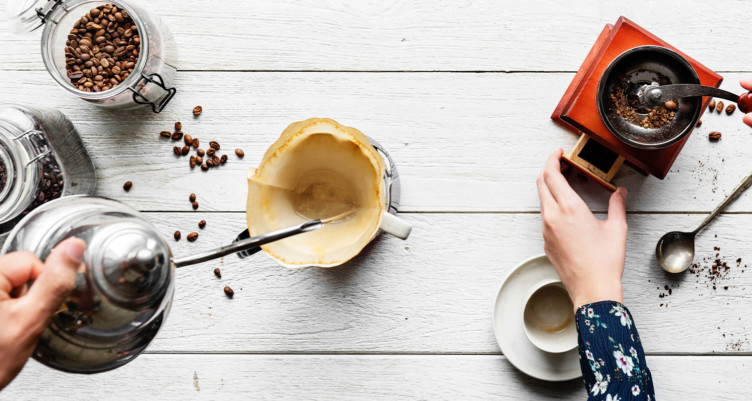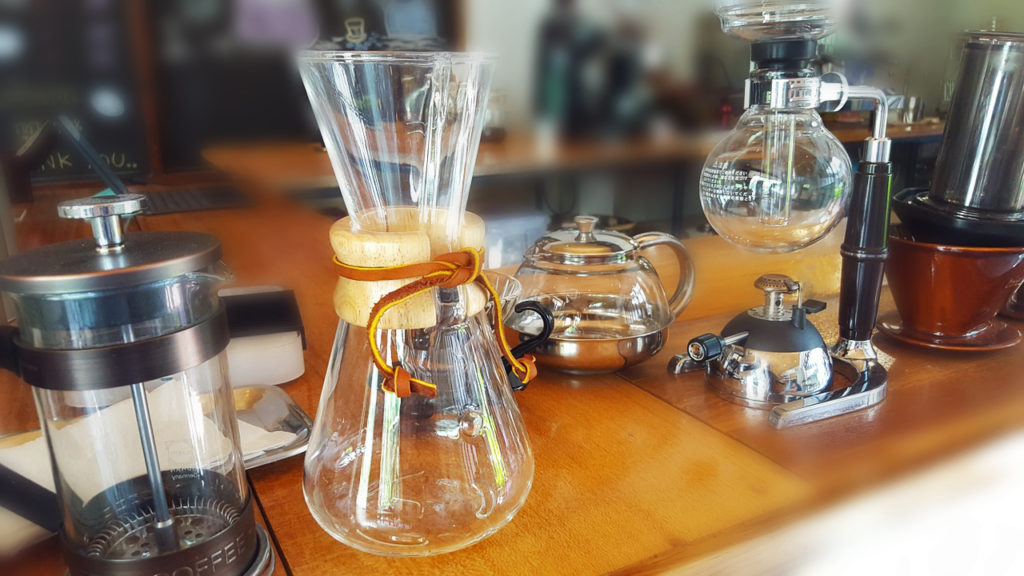The Influence of Different Coffee Brewing Methods on Flavor and Scent
The Influence of Different Coffee Brewing Methods on Flavor and Scent
Blog Article
The Scientific Research Behind Coffee Brewing: Just How Temperature and Time Affect Your Beverage
Understanding the scientific research behind coffee brewing reveals that temperature level and time are not simple variables however essential components that determine the drink's taste profile and total quality. As we explore the subtleties of these elements, the concern occurs: exactly how can one effectively balance temperature level and time to attain that best mixture?
The Chemistry of Coffee Extraction
The chemistry of coffee extraction explores the intricate procedures that change raw coffee beans right into the aromatic drink appreciated worldwide. This transformation largely entails the solubility of various compounds existing in the beans, which are affected by factors such as grind dimension, water high quality, and the brewing approach used.
During the brewing process, hot water functions as a solvent, extracting soluble substances, including caffeine, lipids, sugars, and acids, from the coffee grounds. Each substance adds to the flavor account, aroma, and body of the final drink. Acids are responsible for tangy and bright notes, while oils add to a rich mouthfeel.
The first stages of developing essence acids and sugars, leading to a pleasurable level of acidity, while long term extraction can lead to anger due to over-extraction of unwanted substances. Recognizing these chemical interactions is critical for maximizing developing strategies, as the balance between extraction time and water temperature level can significantly affect the general top quality of the coffee.
Perfect Brewing Temperatures
Locating the best brewing temperature level is important for opening the complete possibility of coffee flavors and fragrances - coffee brewing methods. Study suggests that the ideal variety for developing coffee lies between 195 ° F to 205 ° F(90 ° C to 96 ° C) Within this range, the removal process efficiently dissolves the desirable soluble substances in coffee beans, causing a flavorful and balanced mug
Developing at lower temperatures, such as below 195 ° F(90 ° C ), might result in under-extraction, yielding a weak and acidic mixture with low-key tastes. Conversely, brewing at temperatures exceeding 205 ° F(96 ° C) can lead to over-extraction, creating a bitter and rough taste as a result of the extreme dissolution of unwanted substances, such as tannins.
Furthermore, the perfect developing temperature can differ relying on the coffee bean type and roast degree. Lighter roasts often profit from slightly greater temperatures to improve their complex taste accounts, while darker roasts might be better matched to lower temperature levels to mitigate bitterness.
Eventually, preserving accuracy in brewing temperature levels is vital for attaining a harmonious balance of tastes, ensuring that every mug of coffee provides a rewarding sensory experience.
Impact of Developing Time
Developing time plays a crucial duty in establishing the taste account and general high quality of coffee. The extraction process, which affects the preference, scent, and body of the drink, is mainly reliant on just how long the coffee premises touch with water. Much shorter developing times can lead to under-extraction, causing a sour or weak taste, as not nearly enough soluble substances are dissolved. Alternatively, prolonged developing can result in over-extraction, where undesirable compounds are launched, causing a bitter or astringent taste.
Optimal developing time differs depending upon the technique made use of and the work dimension of the coffee. As an example, a French press typically requires concerning four mins, while espresso extraction is normally completed within 25 to 30 secs. It is important to adjust developing time in combination with other variables, such as water temperature level and coffee-to-water ratio, to accomplish the desired taste profile.
Comprehending the impact of brewing time allows coffee fanatics to fine-tune their brewing strategies, eventually boosting the sensory experience of their cup (coffee brewing methods). With careful focus to this variable, one can unlock the full capacity of the coffee, exposing its unique qualities and nuances
Brewing Techniques and Their Impacts

As an example, methods like French press and cool mixture allow for a longer steeping time, leading to a fuller body and robust taste due to increased removal of oils and soluble solids. Alternatively, coffee brewing utilizes high pressure and a much shorter extraction time, producing a focused shot that stresses extreme flavors and a rich crema.
Pour-over strategies, such as Chemex or V60, offer a more regulated removal process, enabling the maker to manipulate circulation price and water distribution, which can improve brightness and quality. Meanwhile, percolation approaches cycle water with the coffee premises several times, resulting in a more powerful, frequently bitter flavor.
Last but not least, making use of paper filters versus steel filters can likewise impact the last preference; paper filters great post to read generally produce a cleaner cup by trapping oils and fine particles, while steel filters permit more oils to travel through, contributing to a fuller mouthfeel - coffee brewing methods. Comprehending these subtleties can boost the coffee experience substantially
Tips for Refining Your Mixture
A well-executed brew can transform even the easiest coffee right into an exceptional experience. Grind the beans just prior to brewing to optimize freshness, making certain the grind size matches your developing technique-- coarser for French press and finer for coffee.
Water high quality plays an important role; use filtered water devoid of impurities. The ideal brewing temperature ranges in between 195 ° F and 205 ° F(90 ° C to 96 ° C ) Also hot can scorch the coffee, while as well amazing might under-extract tastes.
Timing is just as important. For immersion methods, soaking for three to 5 mins is ideal, whereas drip approaches normally take around five minutes. Try out mixture times to locate your recommended stamina.

Conclusion
In summary, the intricate relationship between temperature and time is critical in the coffee brewing process. Sticking to optimum developing temperature levels in between 195 ° F and 205 ° F, together with exact timing customized to every technique, guarantees the desired flavor account is attained. Recognizing these clinical principles empowers people to improve their developing methods, ultimately leading to a more delightful and well balanced coffee experience. Mastery of these variables is crucial for any type of coffee lover seeking excellence in their drink.
Understanding the scientific research behind coffee developing discloses that temperature level and time are not simple variables but essential elements that determine the drink's flavor account and overall high quality. Understanding these chemical interactions is vital for enhancing developing methods, as the equilibrium between removal time and water temperature can dramatically influence the total quality of the coffee.Developing time plays a pivotal function in determining the taste account and overall top quality of coffee. By focusing on these aspects-- bean top quality, grind size, water temperature, soaking time, and ratio-- you can raise your coffee developing procedure, resulting in a regularly premium cup.
In summary, the detailed relationship between temperature level and time is paramount in the coffee brewing process.
Report this page